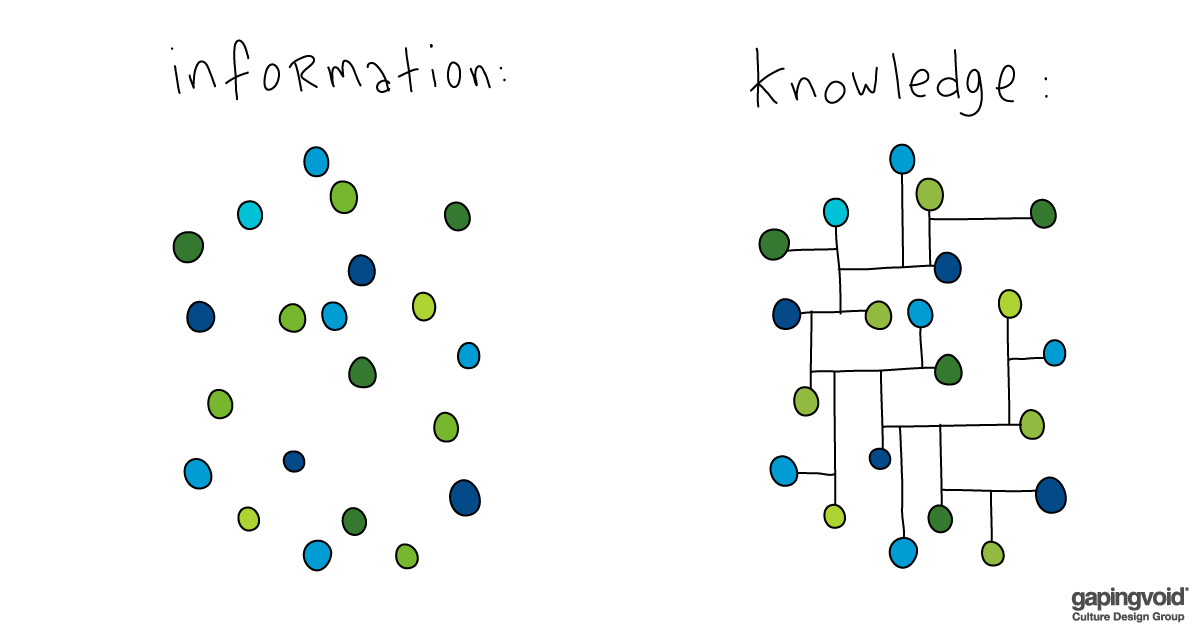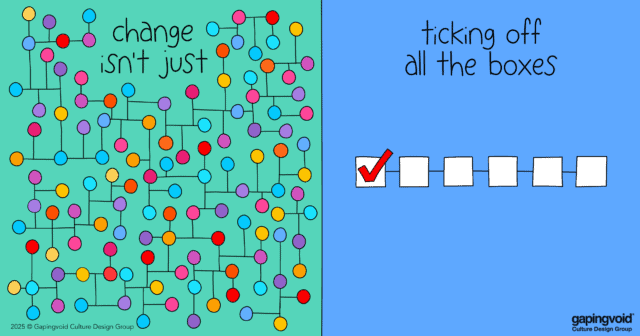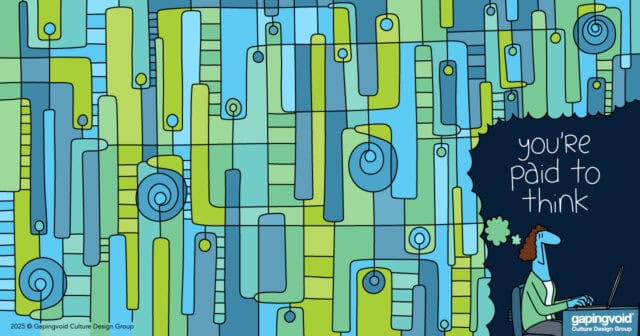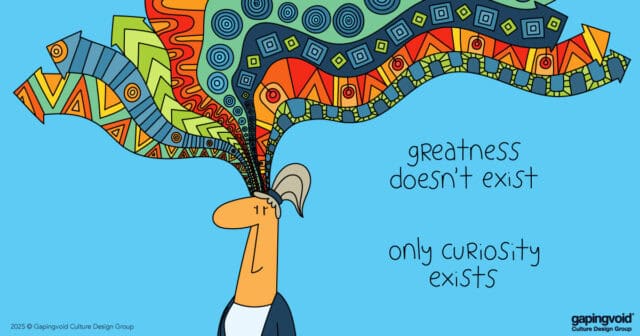
Everyone talks about “Digital Transformation” (DT), but few people talk about what it actually means.
Because it has the word “Digital” in it, one automatically assumes it has something to do with microchips and the Internet, i.e. technology.
Well, yes, it does, but that’s not the main thing. The main play in DT is information, i.e. data.
But as our now viral image implies, it’s not just enough to have “more” data. A bigger pile of nothing is still nothing.
What is needed is data that allows one to make new connections and new insights.
Mohan Subramaniam, an associate professor of strategy at Boston College’s Carroll School of Management, recently wrote an article about this.
Most data in companies is what he calls “Iterative” data. Data that tells you when something was shipped, how many widgets did your supplier sell you last month, what Harry’s sales figures were last year, and so forth. Pretty standard stuff. This is what’s represented in the first panel of the semiotic above.
The real competitive edge – and this is what DT is supposedly all about – is getting to what Sonal calls “Interactive Data”, i.e. what’s represented in the second panel above.
Interactive Data is what allows unrelated objects to suddenly become relevant to each other, increasing competitive advantage.
He uses a mattress factory as an example.
Iterative data is when you know certain sleeping patterns of your average customer. This allows you to, say, tweak the manufacture of your mattress.
Sonal’s example of Interactive data is when you share your data with other parties, say, light bulb manufacturers, which allows them to manufacture special switches to turn the lights on and off at specific times, giving your customers a supposedly better night’s sleep. Win-win.
All Digital Transformation is, theoretically, the technology to move beyond Iterative Data to Interactive Data.
Like the image above, it looks pretty simple.
And it is. It’s just not easy.



